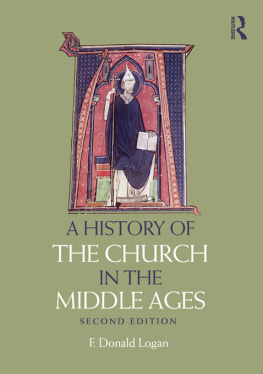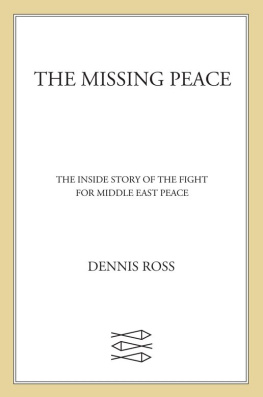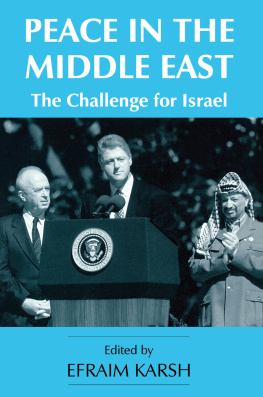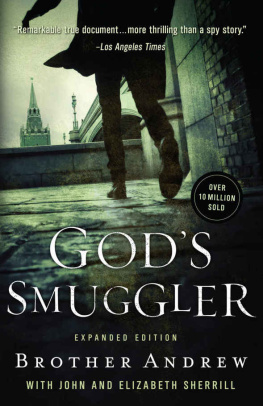
2004 by Open Doors International
Published by Revell
a division of Baker Publishing Group
P.O. Box 6287, Grand Rapids, MI 49516-6287
www.revellbooks.com
Ebook edition created 2011
All rights reserved. No part of this publication may be reproduced, stored in a retrieval system, or transmitted in any form or by any meanselectronic, mechanical, photocopying, recording, or otherwisewithout the prior written permission of the publisher and copyright owners. The only exception is brief quotations in printed reviews.
ISBN 978-1-4412-3890-0
Library of Congress Cataloging-in-Publication Data is on file at the Library of Congress, Washington, D.C.
Unless otherwise indicated, Scripture is taken from the Holy Bible, New International Version . NIV . Copyright 1973, 1978, 1984 by Biblica, Inc. Used by permission of Zondervan. All rights reserved worldwide. www.zondervan.com
Published in association with Yates & Yates, LLP, Attorneys and Counselors, Orange, California.
In a few cases names of individuals have been changed at their request.
The internet addresses, email addresses, and phone numbers in this book are accurate at the time of publication. They are provided as a resource. Baker Publishing Group does not endorse them or vouch for their content or permanence.
C ONTENTS
I NTRODUCTION
Johan Companjen, President of Open Doors
T he book you are holding will be considered by some as controversial. That is even true within Open Doors, the ministry founded by Brother Andrew in 1955 when he traveled to Poland and saw the struggles of the Church under Communism.
For those of you who are not familiar with Open Doors, we exist to strengthen and equip the Church living under or facing restriction and persecution because of their faith in Jesus Christ. To do that, we provide Bibles and other literature for persecuted Christians who otherwise could not obtain them. In 2003 we delivered nearly four million Bibles, childrens Bibles, study Bibles, and other scriptural books to churches in Asia, Latin America, Africa, and throughout the Muslim world. In addition, we trained twenty-two thousand pastors and church leaders in how to lead their congregations and stand strong in their faith in the midst of persecution and discrimination.
In the late 1960s, when the visibility of Brother Andrews best-selling book Gods Smuggler prevented him from personally returning to the Soviet Union and Eastern Europe, one of the places he felt led to visit was the Middle East. What he saw troubled him. More and more he began to speak out about the region and particularly about the rise of Muslim fanaticism, which has had a dramatic impact on the Church in the region. He felt it was critical to do whatever he could to help strengthen the Church so it could be a light in the midst of the unending conflict.
More radically, Brother Andrew also set out to reach Israels enemies with the gospel of Jesus Christ. Sometimes he did this with words, sometimes by showing Christian love and compassion. In the process, he challenged the thinking of the local Church.
When I was appointed president of Open Doors in 1995, it freed Brother Andrew to concentrate on this region. This book describes his pilgrimage. It does not seek to be political or take sides, even though a lot of attention is given to the suffering of the dwindling community of Christians among the Palestinian population.
It is important to note that committed Christians disagree on many theological issues, such as speaking in tongues or eternal security or prophecy. The issues of Israel and the land can be among the most divisive. Weve wrestled with this within Open Doors, and we have staff members who stand on both sides of the issues. Still, we love each other and work together because we share a higher call to the Church of Jesus Christ.
It is my prayer that this book will stir the body of Christ around the world to more compassion and prayer for this difficult part of the world. The closer we come to the return of Jesus Christ, the more we need to stand united. Both Jewish believers in the Messiah and their Arab and Palestinian brothers and sisters living in the land need our prayers and support. May this book show the way to what I believe is the only hope for peace in the Middle Eastshining the light of Jesus Christ into the darkness of this terrible conflict.
P ART
S TRENGTHEN W HAT R EMAINS
A twisted, blackened skeleton of steel smolders in the middle of a Jerusalem street. Sirens scream. Onlookers weep. The announcer reports that a suicide bomber has struck again in a crowded bus.
How many times have we seen such images of terror? Have we become immune to such news? It has been going on for years, and yet we know its not over. There will be retaliation. People will die. There will be another attack. More people will die.
Will this cycle of violence never end?
And what does this mean for us?
T HE H ORROR
Jerusalem, September 4, 1997
K aren Alan had finished her errands and was returning to work at the second-floor office of a building on Ben Yehuda Street. The pedestrian mall was lined with cafes and shops. Local Jerusalem residents and tourists strolled along the cobblestone street and sat at outdoor tables enjoying coffee and the people show. For foreign visitors this was a favorite destination after seeing the Old City, less than a mile east on Jaffa Road. Here tourists shopped for menorahs, mezuzahs, and embroidered yarmulkes or, for more discerning tastes, original Jewish jewelry, art, and pottery.
Within this vibrant section of West Jerusalem sat King of Kings College. Just one month before, Karen had started working there as an editor and translator. She hurried up the stairs after lunch, eager to get back to work.
As Karen entered the office and set her purse on her desk, an explosion nearly knocked her off her feet. She grabbed her desk to steady herself. Almost instantly there was a second explosion, then a third even more powerful blast rocked the building.
For a moment Karens ears rang. She braced herself for another blast. Then she heard office mates yelling. Oh, my God, this cant be happening , she thought. She turned and hurried with several others into an office with a window overlooking the street. As she peered out to see what had happened, she could hear shouts and screams rising from the pavement. The sight was horrifying. Bodies, both conscious and unconscious, every one covered with blood, lay in the street and on the sidewalks. One of the victims struggled to his feet and staggered blindly, blood flowing over his eyes from a gash in his head. A few witnesses stood frozen. Others were running frantically.
Karens mind could barely process all the sensory information. Her eyes moved toward one spot where she could see the bloody legs of one of the bombers. His torso had been blown apart in the blast. She became aware of sounds. Car and store alarms screamed. A cell phone rang, unanswered. Ambulance and police sirens announced their arrival. Dust along with the smell of explosives and burned flesh chafed her nasal passages and caused her eyes to water. The first paramedics did triage until additional help arrived. Orders were shouted. Police began corralling the crowd.
Suddenly, Karen remembered her friend Shiri, who should have been returning to her office next door. Where was she? She walked back to her desk and dialed her friends cell number, but there was no answer. Impulsively she hurried down the stairs and moved through horrified spectators in the lobby to the main entrance, but a policeman stopped her. A body lay right outside the door. No one can leave, said the officer.
Next page









